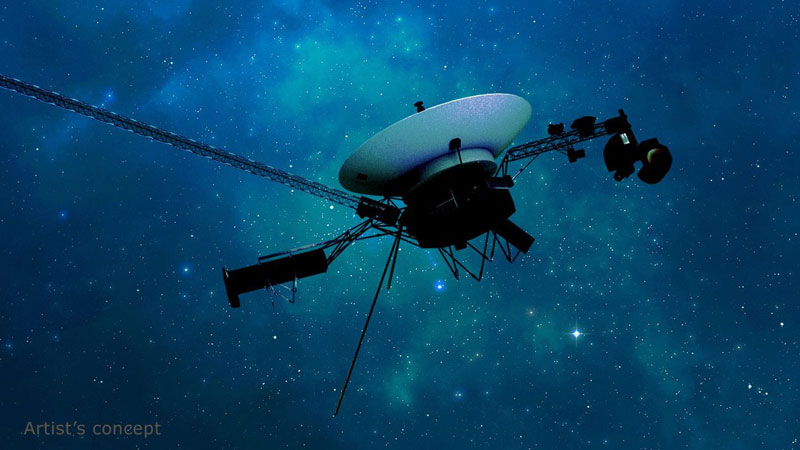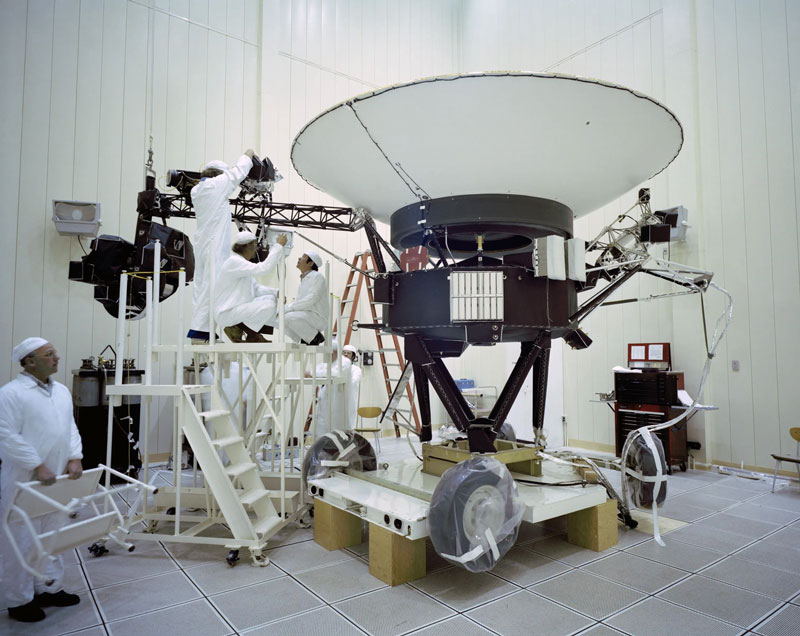NASA specialists turned off one of the scientific instruments of the Voyager 2 probe, the productivity of which has sharply decreased in recent years. The saved electricity from the probe’s onboard power supply will allow it to extend its flight in interstellar space, where it entered in 2018, for years. NASA expects Voyager 2 to continue collecting invaluable information well into the early 30s, although few previously expected to see it work beyond the mid-20s.

Artist’s representation of the Voyager probe. Image source: NASA
The device was turned off on September 26, 2024 and was carried out under the supervision of specialists. The signal reached Voyager 2 19 hours after being sent from Earth. Now the probe is 20.5 billion km from us. Even at the speed of light in a vacuum, it took almost a day for the signal to reach the device. We had to wait the same amount of time to find out if the command worked. As they say at NASA, everything planned was done.
The disabled instrument is the PLasma Science (PLS) experiment. Three sensors of the device are always oriented towards the Sun to record the direction, speed and volume of charged solar particles – solar wind (plasma), and one sensor is located at right angles to them. This sensor was needed in those rare cases when the probe passed close to the planets, then it could study the behavior of the solar wind in their magnetospheres.
After the Voyager 2 probe exited the heliosphere into interstellar space, the lonely sensor received data only once every three months, when the probe made a full rotation around its axis for orientation. Outside the heliosphere, the plasma flow from interstellar space is directed “into the face” of the probe and is not perceived by the sensor directed to the side. Also, the flow of plasma from the Sun no longer reaches the three receivers of charged particles directed at it, since the probe moves outside the heliosphere of the Sun and, therefore, the solar wind no longer reaches the device. Thus, the PLasma Science device turned out to be practically useless and at the same time it took away invaluable energy from the probe.

March 1977. Probe assembly stage.
On the Voyager 1 probe, by the way, the PLS device stopped working back in the 80s. It was disabled a long time ago. The power source for both Voyagers is the same – it is a radioisotope thermoelectric generator (RTG) powered by the decay of plutonium. Every year it loses 4 watts of power. For the experiment on Voyager 2 in 2023, the power stabilization circuit was turned off, which also consumed energy, but was in standby mode all the time. This added at least three years to the probe’s flight life. In addition, shutting down the PLasma Science instrument will add several more years of flight time. Four scientific instruments remain in operation on Voyager 2. They continue to collect and send data to Earth.
On Voyager 1, NASA did not risk turning off the power stabilization unit. This probe flew about 5 billion km further from Earth than its twin, and it is moving away from the trajectory of Voyager 2. Voyager 1 is considered a more valuable device and NASA does not intend to risk it again.
This year both probes turn 47 years old. They had many adventures even in the first years of work, not to mention various incidents in their later years. But they have a chance to survive their 50th anniversary and maybe even live to see the next anniversary.